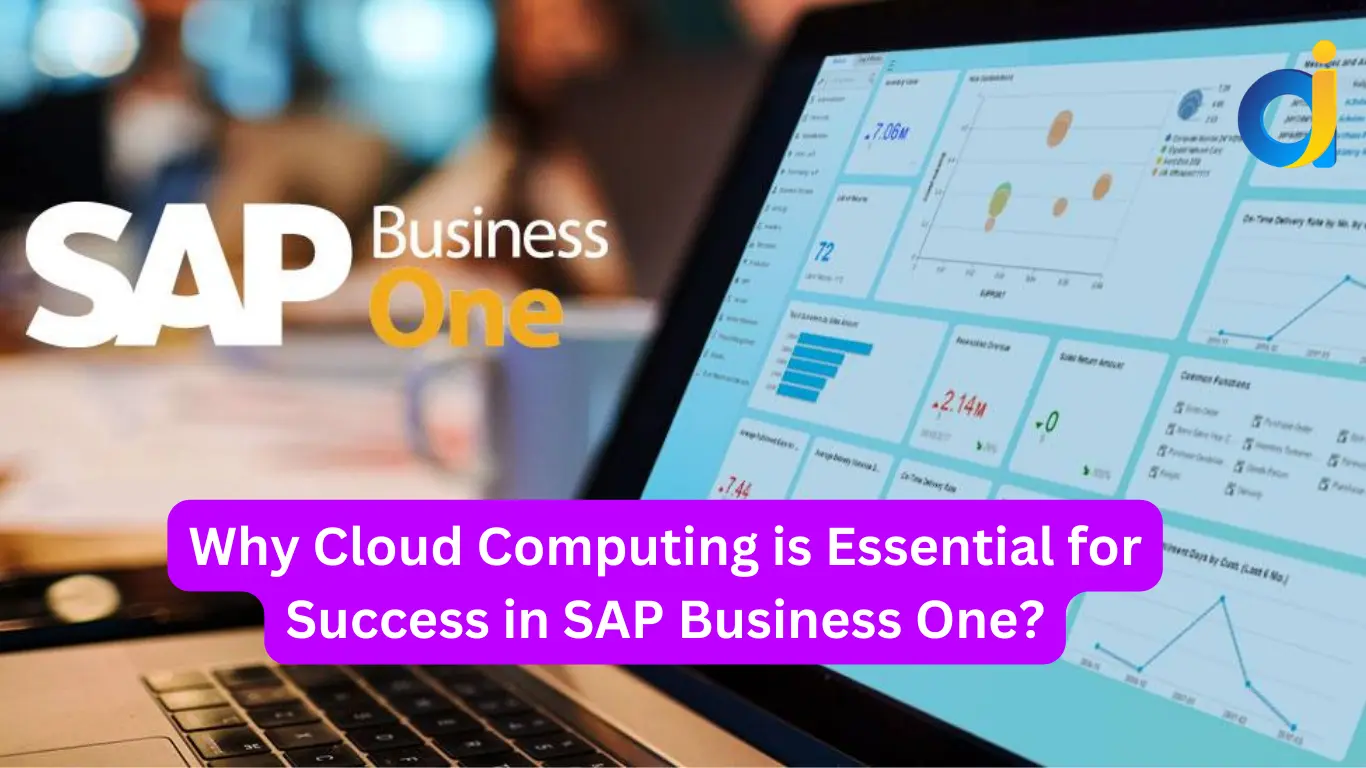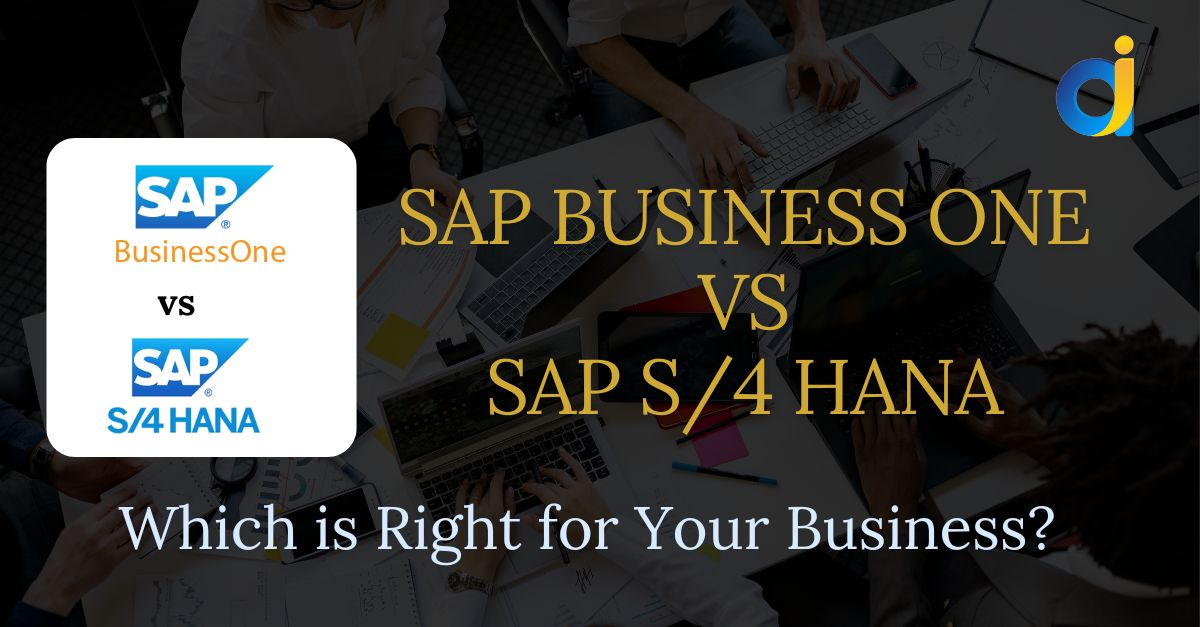Are you struggling to keep up with the fast pace of business technology? Cloud computing offers a solution by providing tools and services over the internet. Our article will guide you through how SAP Business One benefits from being in the cloud, making it easier for small and medium-sized enterprises to thrive.
Discover why moving to the cloud could be your next smart move.
Key Takeaways
- Cloud computing offers a flexible and cost – effective way for businesses to use SAP Business One, removing the need for expensive physical servers.
- With cloud services, companies enjoy benefits like high reliability, easy scalability based on business needs, financial savings due to reduced upfront investments, and access to the latest technology without requiring in-house experts.
- Deploying SAP Business One in the cloud allows small and medium-sized enterprises (SMEs) to streamline operations by integrating all core business functions under one platform, enhancing data accuracy and decision-making capabilities.
- Security is enhanced with cloud deployments as providers invest heavily in safeguarding data centres and ensuring compliance with global regulations. This addresses concerns over keeping sensitive information safe.
- The choice between cloud-based or on-premise deployment of SAP Business One depends on specific business needs but moving to the cloud offers added flexibility, predictable costs, improved collaboration opportunities, and an eco-friendly approach by centralising resources.
Understanding Cloud Computing
Cloud computing gives us access to applications and networks over the internet, removing the need for physical servers in your office. It offers different levels of services, from software on demand to storing data and running various computer programs remotely.
Definition and Types of Services
Cloud computing offers services over the internet on a pay-as-you-go basis. This includes storage for your data, ways to keep it safe, connections between computers, software applications for different tasks, and tools to understand your business better.
You can use these services without having to own or maintain the physical infrastructure.
There are three main types of cloud computing services: Software-as-a-Service (SaaS), Platform-as-a-Service (PaaS), and Infrastructure-as-a-Service (IaaS). SaaS lets you access apps hosted by someone else—for example, programs for resource planning or customer management.
PaaS provides an online environment for developers to create and run their software applications. IaaS gives businesses the ability to “rent” computing resources like servers, networks from a data hub, and places to save files digitally, which helps them scale up efficiently without investing in hardware.
Cloud computing transforms how companies access technology services.
Public vs. Private vs. Hybrid Cloud
Transitioning from the broad spectrum of cloud services, a deeper dive into the types of cloud environments—public, private, and hybrid—sheds light on their unique benefits and applications within businesses. Each model caters to different needs, ranging from security to efficiency and control. Here’s a concise table comparing these three cloud models.
| Model | Description | Key Benefits |
| Public Cloud | Shared infrastructure for multiple users, managed by a third-party provider. | Cost-effective, scalable, no maintenance. |
| Private Cloud | Exclusive use by a single organisation, can be hosted internally or externally. | High security, more control over data. |
| Hybrid Cloud | Combines public and private clouds, with the ability to keep some resources on-premises. | Flexibility, security for sensitive data, efficient resource use. |
Public clouds stand out for their affordability and efficiency, appealing to small and medium-sized enterprises (SMEs) looking to optimise costs without hefty investments in infrastructure. Private clouds, on the other hand, offer supreme security and control, making them an ideal choice for industries handling sensitive information. Hybrid clouds present a middle ground, allowing businesses to enjoy the best of both worlds. They enable companies to safeguard critical data within a private environment while leveraging the scalable resources of the public cloud for less sensitive tasks. This model supports flexibility and strategic use of technology resources, adapting to varying business requirements.
Introduction to SAP Business One
SAP Business One is an ERP (Enterprise Resource Planning) system designed for small to medium enterprises. It integrates all core business functions across your company, from sales and customer relationships to financials and operations.
Having used this software firsthand in a growing tech company, I can attest to its power in streamlining processes and enhancing data accuracy. This single solution eliminates the need for separate installations and complex integrations of various systems.
Deploying SAP Business One means you’ll be managing your business on a reliable platform that supports growth through scalability features. Unlike traditional setups that require hefty initial investments in hardware, this cloud-enabled technology allows for flexible subscription models and reduced IT overheads.
With real-time analytics powered by SAP HANA, decision-makers gain instant insights into business performance, leading to quicker adjustments and improved outcomes. Its adaptability makes it suitable across industries ranging from manufacturing to services, providing a solid foundation for digital transformation initiatives.
Understanding SAP Business One for SMEs
SAP Business One offers a powerful solution for SMEs looking to streamline their operations. This enterprise resource planning (ERP) tool brings all the key functions of a business under one roof, from accounting and customer relationship management (CRM) to inventory control and purchasing.
For smaller businesses, managing these areas efficiently is crucial for growth, yet many struggle with piecemeal systems that don’t communicate well with each other. SAP Business One provides an integrated platform, making it easier for these companies to manage their core activities without the need to juggle multiple software solutions.
In my own experience working with SMEs, implementing SAP Business One transformed how we approached our daily tasks.
The cloud-based version of this software further enhances flexibility and security while offering predictability in costs – vital factors for startups and small enterprises operating on tight budgets.
With features like real-time analytics and reporting, businesses can make informed decisions quickly, staying ahead in competitive markets. The move from traditional methods of managing company data towards adopting cloud solutions marks a significant shift in how SMEs operate, laying a foundation for innovation and scalability that aligns perfectly with today’s fast-paced business environment.
SAP Business One in the Cloud
Discover how SAP Business One leverages cloud computing to transform business management, offering advanced features like data security and scalable resources from top-tier cloud service providers.
Explore the fusion of enterprise resource planning systems with modern cloud technology for an innovative approach to handling business applications efficiently.
Benefits of Cloud Deployment
Cloud deployment brings numerous advantages to businesses, making it a go-to choice for many. It ensures companies can tap into the latest tech developments without heavy investments in physical infrastructure.
- Reliability: Cloud services offer high uptime percentages, ensuring business applications are always available. This is crucial for maintaining smooth operations and customer satisfaction.
- Flexibility and Scalability: Companies can easily scale up or down their usage based on current needs without significant delays or costs associated with physical hardware adjustments.
- Financial Savings: Moving to the cloud reduces the need for large upfront capital investments in servers and other hardware. Operational expenses also go down as maintenance responsibilities shift to the cloud service provider.
- Access to Cutting-Edge Technology: With cloud platforms, businesses have immediate access to the latest versions of software services, including artificial intelligence and machine learning tools, without needing in-house expertise to manage them.
- Security Enhancements: Despite common concerns, cloud deployments often offer superior security measures compared to traditional on-premises installations. Cloud providers invest heavily in securing their data centres and ensure compliance with global data regulations.
- Automated Software Updates and Backups: Cloud platforms handle updates and backups automatically, reducing the workload on internal IT teams and ensuring systems are always up-to-date with minimal downtime.
- Improved Collaboration: Cloud-based solutions enable team members to work together more effectively, regardless of their physical location. Sharing resources and information becomes seamless across borders.
- Eco-Friendly Approach: By centralising resources in efficiently managed data centres, cloud computing reduces the carbon footprint of IT operations compared to distributed on-premises setups.
Moving from these benefits, let’s explore how SAP Business One leverages cloud technology for enhanced business performance.
Cost and Scalability Considerations
Choosing SAP Business One in the cloud shapes how a business manages finances regarding its ERP system. Initial costs often appear lower since there’s no need for heavy investment in physical infrastructure like servers or data centres.
This setup eliminates the upfront expense of purchasing hardware, which can be a hefty sum. Instead, companies pay a subscription fee for accessing software and storage on cloud hosts such as Amazon Web Services (AWS) or Microsoft Azure.
This model offers flexibility, allowing businesses to adjust their services based on current needs without committing to long-term expenses.
From personal experience, scalability is another crucial aspect that benefits significantly from a cloud-based approach. As an enterprise grows, so does its demand for resources like computing power and storage.
With cloud hosting, scaling up becomes straightforward – it’s just a matter of adjusting your plan with the service provider. No delays due to ordering and setting up additional hardware; you get what you need almost instantly.
This nimbleness ensures that businesses can respond quickly to market changes or growth opportunities without being held back by technical limitations.
Comparison: SAP Business One Cloud vs On-premise Deployment
Deciding between SAP Business One Cloud and on-premise deployment is crucial for businesses. Both options have unique benefits tailored to different needs. Here’s an insightful comparison to help you understand the key differences.
| Feature | SAP Business One Cloud | On-Premise Deployment |
| Initial Cost | Lower, with subscription-based model | Higher, due to hardware and software investments |
| Customisation | Standard options with some flexibility | Highly customisable to fit specific business processes |
| Security | High, with data stored in secure data centres | Depends on company’s own IT infrastructure |
| Scalability | Easily scalable to meet changing business needs | Scalability possible but often involves additional hardware |
| Cost Predictability | More predictable with fixed monthly expenses | Varies, with potential for unforeseen expenses |
| Control over Data | Controlled by service provider with access based on policies | Full control by the business |
| Implementation Time | Faster, as infrastructure is already in place | Longer, requires setup of hardware and software |
| Flexibility | Flexible access from anywhere with an internet connection | Access typically limited to the office environment |
This table summarises the main differences between cloud and on-premise deployments of SAP Business One. Businesses must weigh these factors carefully to choose the best fit for their specific needs and objectives. Cloud deployments offer flexibility, cost predictability, and enhanced security, making them an appealing choice for many. On the other hand, the on-premise option provides full control over data and high customisability, suited for businesses with particular requirements.
Conclusion
Cloud computing changes how companies use SAP Business One. It makes accessing powerful tools like data analysis and business insights easier and more cost-effective. Firms can scale services up or down quickly, without the heavy investment in physical servers or complex upkeep.
The cloud ensures that even small and medium enterprises can compete on a global stage, using top-tier resources like Google Cloud’s AI for smarter decision-making. This approach not only saves money but also boosts security and efficiency through automated updates.
Cloud computing is truly transforming the landscape for businesses around the world, making advanced technologies accessible to all.
For more detailed insights on how SAP Business One is transforming small and medium-sized enterprises, visit our comprehensive guide here.
FAQs on Cloud Computing in SAP Business One






